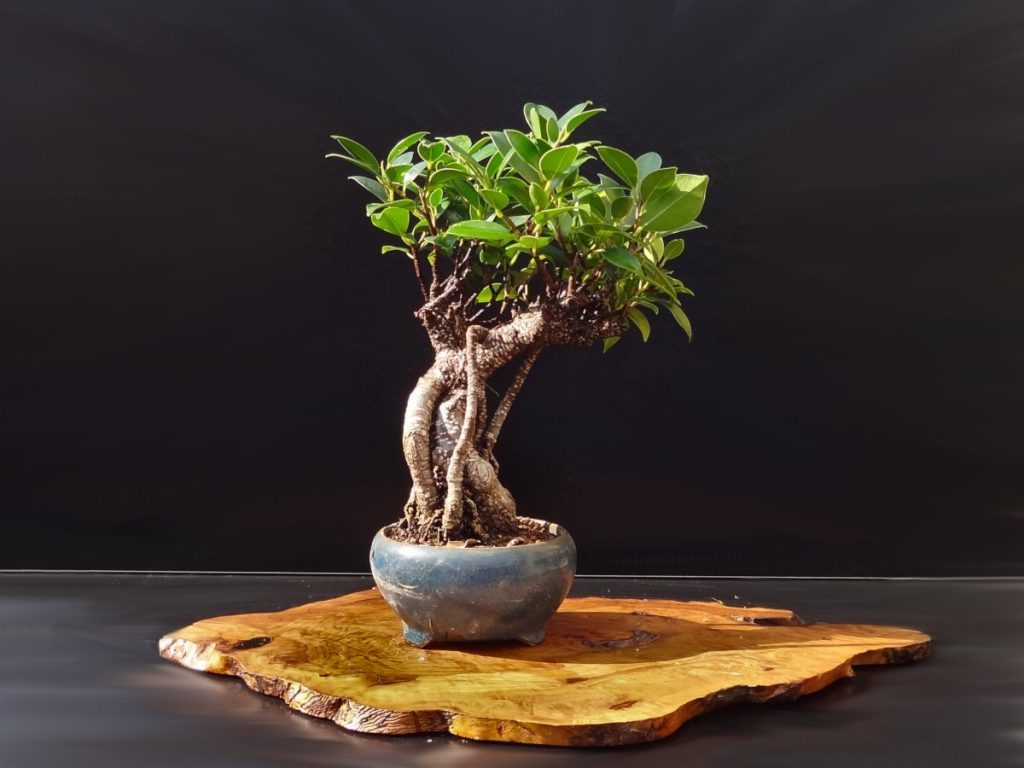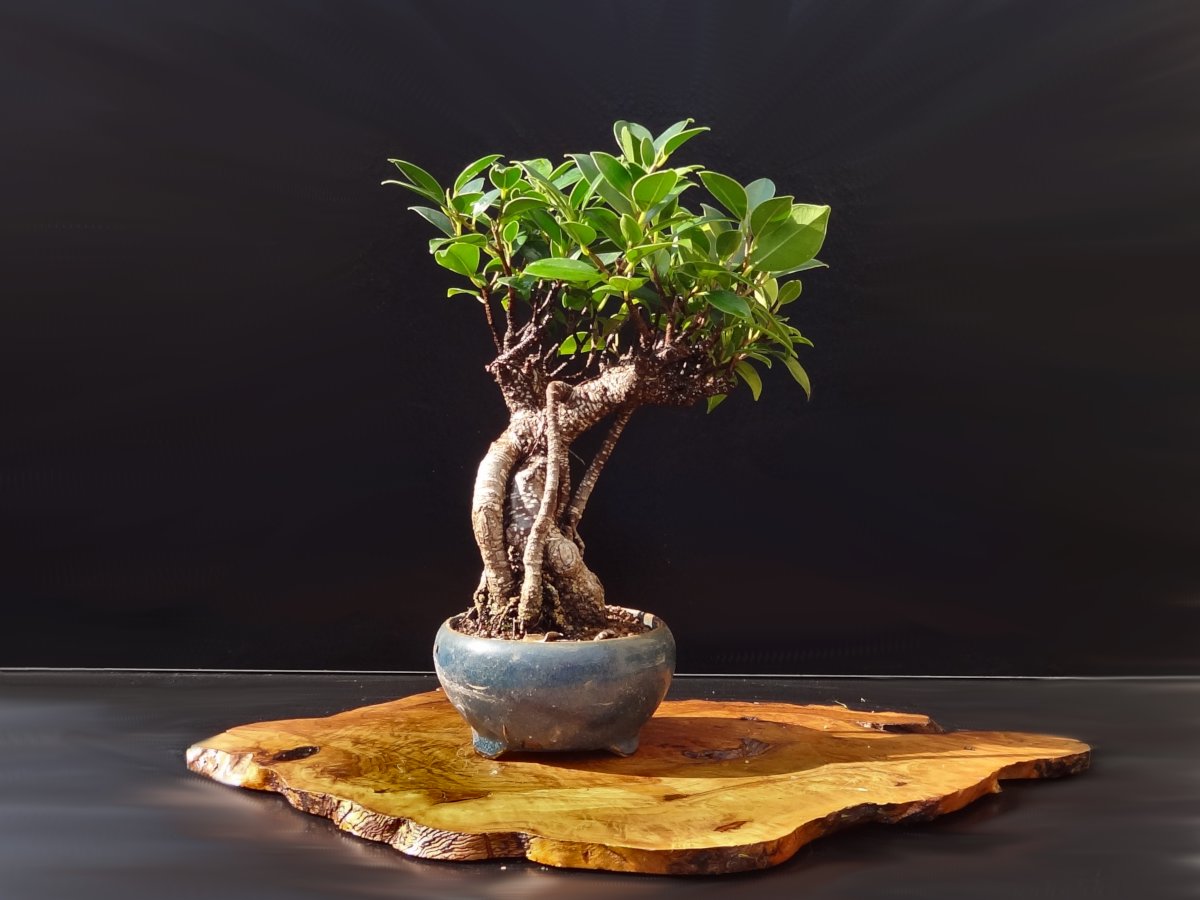- No products in the cart.

Taking care of a Ficus indoor bonsai tree involves ensuring the right location, watering, pruning, and feeding to promote successful growth of these popular bonsai trees. Ficus bonsai trees are primarily tropical plants found throughout southeast Asia, including species such as Retusa, Religiosa, Carica, Benjamina, and others. They produce long-lasting, glossy, waxy leaves and may feature aerial roots from the trunk and branches.
Ficus bonsai trees are commonly found in the informal upright style and in small groups, but they can also be styled in formal upright, slanting, semi-cascade, twin-trunk, triple-trunk, and clasped to rock styles. With proper care, they can be kept indoors, making them a popular choice for bonsai in the US.
Location
When it comes to location, Ficus bonsai trees can tolerate low levels of light but should still be placed in a bright location. Ideally, some sunlight should shine in through a window and hit the leaves of the tree. A south-facing window is ideal, but east and west-facing windows are also acceptable. Dark corners, bookshelves, and coffee tables can often be too dark. A conservatory can be a good location for much of the year, but it can get too hot in summer and too cold in winter. Ficus bonsai trees can also be grown outdoors in summer, but they are frost-tender and should be moved back inside when nighttime temperatures drop down to single figures.
Watering
Proper watering is essential for Ficus indoor bonsai tree care. Ficus prefer moist, well-drained soil and should not be left sitting in a pool of water. When kept indoors, mist spraying with water is beneficial to create a humid atmosphere around the bonsai. A drip or humidity tray can also help with this, as the water in the bottom of the tree will gradually evaporate. Too much water can damage the roots, causing the leaves to yellow and fall off, while too little water can result in dry, brittle leaves. The key to watering, as with all bonsai tree care, is balance.
Pruning
Pruning is another important aspect of Ficus indoor bonsai tree care. The tree extends shoots of lighter green new foliage when growing, which can be cut or pinched back to a few new leaves after being allowed to extend for 7 to 10cm. The tree leaks milky sap when cut, and branches can be wired with ease. Although Ficus is an evergreen bonsai tree, each leaf will not last forever, and new leaves will gradually replace old ones before they fall off.
Repotting
Repotting every two or three years in spring using a general bonsai soil mix is also crucial for Ficus indoor bonsai tree care. Feeding the tree once a fortnight throughout the growing season from spring to autumn is also necessary to ensure proper nutrition.

